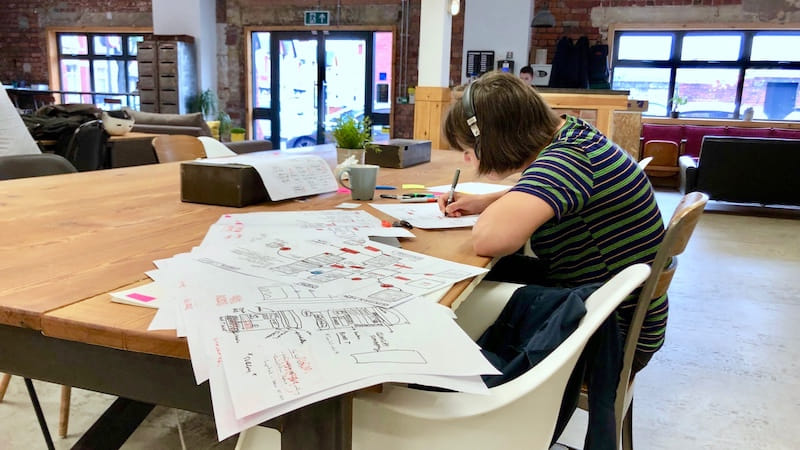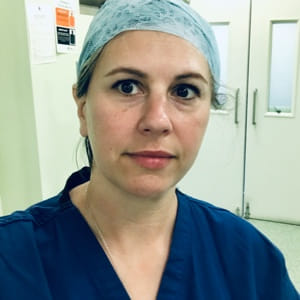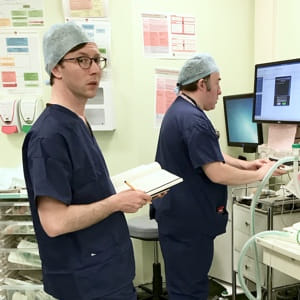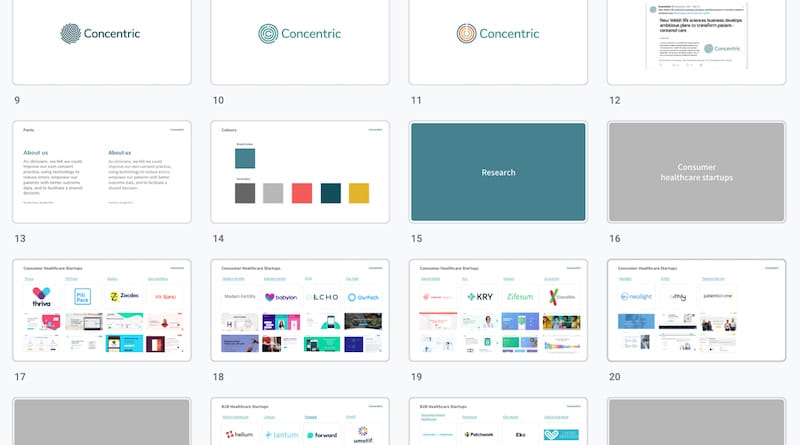I’ve been in the design industry for nearly 20 years and the work I’ve been involved in has really changed over time. From fashion magazines to design systems, service strategy and leading whole teams, but the thing that unites everything I have worked on is the love of solving a good problem, and that is what Concentric is all about!
I met Daf and Ed, Concentric’s co-founders, nearly two years ago. They had both set about to fix issues encountered in their work (while also working full time in busy hospitals!). I loved their attitude towards solving problems and seeing opportunities for good design in healthcare, which was what inspired me to get involved and help them get Concentric started.
What we’ve been up to…
Designing Lean
Designing lean means solving the problem, but not labouring over unnecessary fidelity. We’ve been working to define the main user journeys, optimising the logic behind the flow. By working in close partnership with development we can get started quickly.
One of the things I have focused on is drawing UX rather than jumping into design programmes. At this stage it allows us to easily draw ideas in conversation and not muck about setting up documents. Plus there’s nothing quite like scrunching up an idea you want to ditch!

Next step is making it and getting it in front of users which is really exciting!
Understanding the problem
Observing and hearing from the people who will use your product is the only way to design a good solution. We observed hospital clinics and the process of preparing (and consenting) for surgery. We interviewed patients and clinicians about their experiences and of course just watched what really happens; what the spaces are like; the patient’s body language; the time things really take?
This is just the beginning of our journey so there will be many more visits and tests with patients and clinicians still to come!




Drawing what happens
Off the back of our observations I ran some end-to-end service mapping workshops. We drew up our first version of what really happens. Where are the pain points? What are the loops in the system? There were lots of great discussions about opportunities and areas we need to learn more about. This map helps define our MVP, reminds us what the vision is, and helps us point out what is going wrong and where. Of course this is just V1 and it will keep changing as our understanding does.

Making a mark
Getting started for real also means making a Concentric a brand we can use. We spent time discussing what we thought our experience was all about, and reviewed the feel of other healthcare brands. Concentric is used by both clinicians and patients so it was important that we could make something that felt meaningful (and accessible) to both. As we grow we know our brand will too.
At Concentric we’re looking to empower with personalised information to help make better healthcare decisions. Combined with the idea of adding value around whole patient journeys - around either side of a core consent conversation - our new logo resonated, both concentric circles and an individual’s unique fingerprint.

There’s so much more…
So far it has been fun, we have done loads in a short amount of time, but there’s so much more to do.
Making the surgery experience better for patients and clinicians, and improving these crucial decisions, is no easy challenge, but it is an opportunity that is inspiring to be a part of. One that can really make a positive impact and change peoples lives.